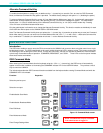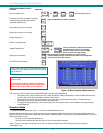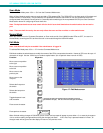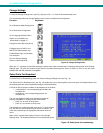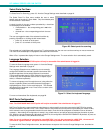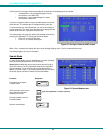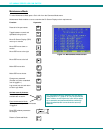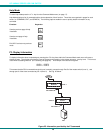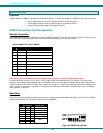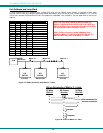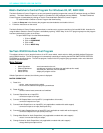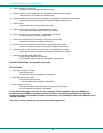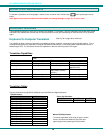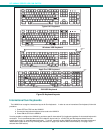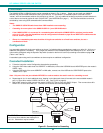
NTI UNIMUX SERIES USB KVM SWITCH
24
RS232 CONTROL
(Optional)
RS232 enables the UNIMUX to be remotely controlled via RS232. To control the UNIMUX via RS232 the user has three options:
• write a program that runs on a PC using the Command Protocol (page 26)
• use the Matrix Switcher's Control Program (page 27) provided on the CD
• use the SerTest program (page 27) provided on the CD
RS232 Connections and Configuration
Remote Connection
The RS232 Interface (optional) is designed to meet the RS232C standard and can be controlled from any CPU or other controller
with an RS232 communications port. The pin-out for the DB-9 connector(s) on the unit is as follows:
RS232 CONNECTOR (DB-9 FEMALE)
PIN SIGNAL FUNCTION
1 CD Carrier Detect
2 TXD Transmit data (RXD at host)
3 RXD Receive data (TXD at host)
4 DTR Data terminal ready
5 GND Signal ground
6 DSR Data set ready
7 RTS Request to send
8 CTS Clear to send
9 - No connection
Note: Security must be disabled or user access granted on the port(s) to be selected by RS-232 control.
On the DB-9 female connector, pins 1 (DCD), 4 (DTR), and 6 (DSR) are shorted and pins 7 (RTS) and 8 (CTS) are shorted.
Therefore, host handshaking is bypassed and TXD and RXD are the only active signals. A straight through DB-9 cable (not null
modem) will work for most CPUs. To daisy chain multiple units, a Matrix Y-1 cable is used (see page 24) for each UNIMUX in the
chain. The last unit will have no connection on its output port and should have DIP switch 1 ON (see table under "Unit Address
and Loop Back" on page 25).
Baud Rate
The baud rate can be changed by powering down the unit, changing the 8 position RS232 dip switch on the front of the UNIMUX,
and then powering back up. This table shows how to set the baud rate.
DIP SWITCH BAUD RATE
4 3 2
OFF OFF OFF 300
OFF OFF ON 600
OFF ON OFF 1200
OFF ON ON 2400
ON OFF OFF 4800
ON OFF ON
ON ON OFF
ON ON ON
9600
Figure 26- RS232 dip-switches
OFF
ON
1 2 3 4 5 6 7 8



